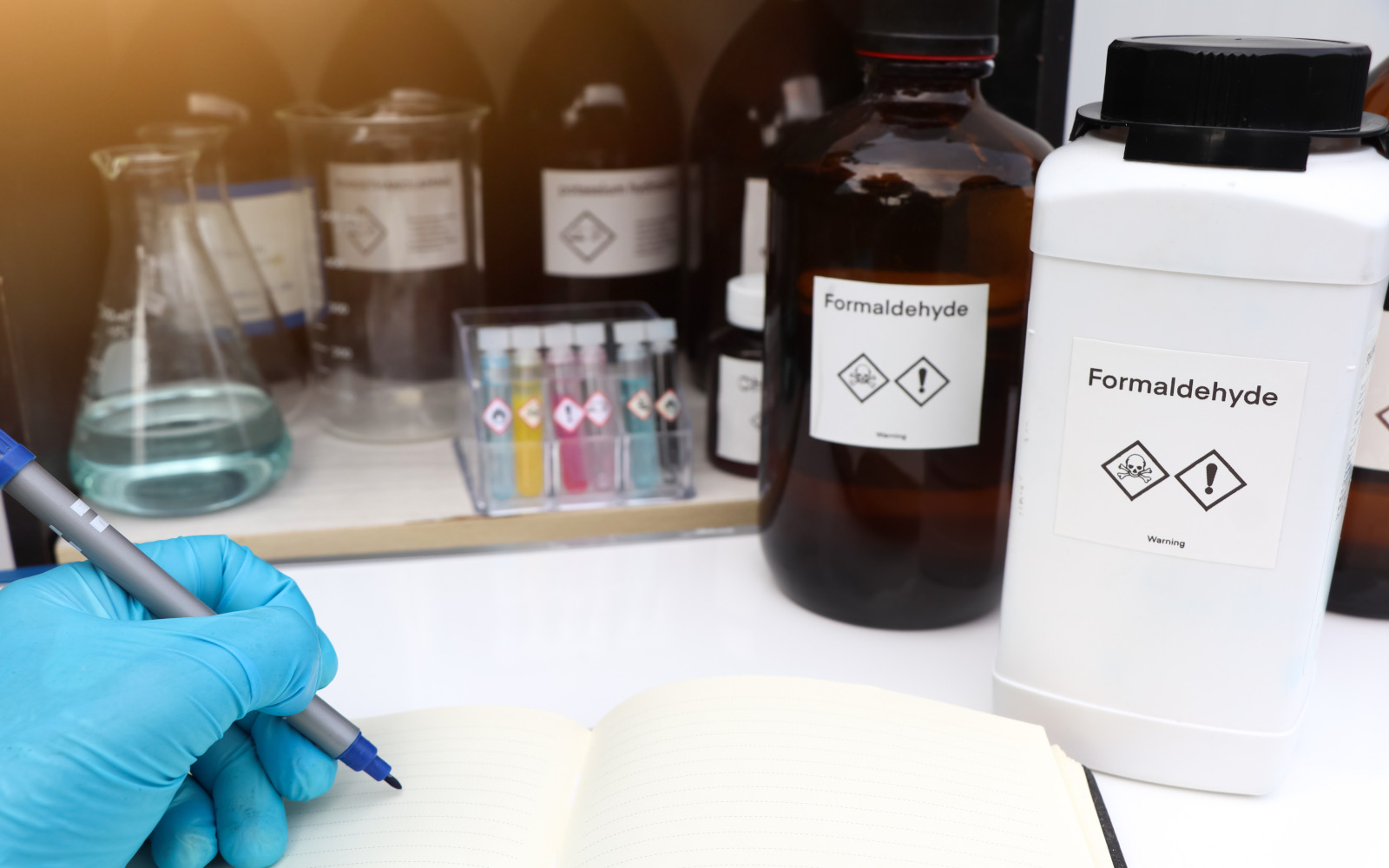Formaldehyde (HCHO) is a colorless gas with a pungent odor, widely used in various industrial and commercial applications. It is a significant component in the production of resins, adhesives, and other chemicals.
Despite its widespread use, formaldehyde is a known carcinogen and can pose serious health risks. This article explores the health effects of HCHO exposure, its industrial uses, and essential safety measures to protect workers and the public.
Health Effects of Formaldehyde Exposure
Formaldehyde is a highly reactive substance that can cause various adverse health effects. The severity of these effects depends on the concentration and duration of exposure.
Acute Exposure
- Respiratory Irritation: Inhalation of HCHO can cause irritation of the respiratory tract, leading to symptoms such as coughing, wheezing, and shortness of breath. High concentrations can result in more severe respiratory distress, including asthma-like symptoms and bronchitis.
- Eye and Skin Irritation: Formaldehyde can cause severe irritation to the eyes, resulting in redness, tearing, and burning sensations. Skin contact can lead to dermatitis, characterized by redness, itching, and blistering.
- Central Nervous System Effects: Acute exposure to high levels of HCHO can affect the central nervous system, causing headaches, dizziness, and in extreme cases, nausea and vomiting.
Chronic Exposure
- Carcinogenicity: HCHO is classified as a known human carcinogen. Long-term exposure can increase the risk of developing cancers, particularly nasopharyngeal cancer and leukemia.
- Respiratory Sensitization: Prolonged exposure to HCHO can lead to respiratory sensitization, making individuals more susceptible to respiratory illnesses and allergic reactions.
- Chronic Respiratory Conditions: Chronic exposure can result in persistent respiratory issues, such as chronic bronchitis and reduced lung function.
Industries and Applications
Formaldehyde is used in a wide range of industries due to its chemical properties. Key applications include:
- Manufacturing: HCHO is a key ingredient in the production of resins and adhesives, such as urea-formaldehyde, phenol-formaldehyde, and melamine-formaldehyde resins. These are used in the manufacture of particleboard, plywood, and other wood products.
- Textiles: It is used in the textile industry to produce wrinkle-resistant fabrics and as a dye fixative.
- Medical and Laboratory: HCHO is used as a disinfectant and preservative in medical laboratories and as a fixative for biological specimens.
Safety Considerations and Best Practices
Given the hazardous nature of formaldehyde, stringent safety measures are necessary to prevent exposure and ensure a safe working environment.
Monitoring and Detection
- Formaldehyde Detection Systems: Reliable HCHO detectors, such as the Accusafe or GasD 8000 by Interscan, are essential for monitoring ambient HCHO levels in workplaces. These systems should be regularly calibrated and maintained for accuracy.
- Ventilation: Proper ventilation systems, including local exhaust ventilation, are crucial to disperse HCHO vapors and maintain safe air quality, especially in enclosed spaces.
Personal Protective Equipment (PPE)
- Respiratory Protection: Workers should use appropriate respiratory protective equipment, such as air-purifying respirators with HCHO cartridges, especially in areas where formaldehyde exposure is possible.
- Eye and Skin Protection: Protective clothing, gloves, and safety goggles or face shields are necessary to prevent skin and eye contact with HCHO.
Emergency Response and Training
- Emergency Protocols: Clear emergency response procedures should be established, including evacuation plans, first aid measures, and immediate medical attention for severe exposure cases. Safety showers and eyewash stations should be accessible in areas where formaldehyde is present.
- Training and Education: Regular training sessions on the hazards of formaldehyde, proper use of PPE, and emergency response actions are critical. Workers should be trained to recognize the symptoms of formaldehyde exposure and understand the necessary steps to take in an emergency.
Lesser-Known Insights and Considerations
- Indoor Air Quality: Formaldehyde can be released from building materials, furniture, and household products, contributing to indoor air pollution. It is essential to monitor and manage indoor HCHO levels, especially in homes and offices.
- Environmental Impact: Formaldehyde can contribute to environmental pollution, particularly in water and soil. Proper disposal and emission controls are necessary to minimize its environmental impact.
Formaldehyde is a versatile chemical with extensive industrial applications, but its potential health risks require careful handling and comprehensive safety protocols.
Understanding the health effects of formaldehyde exposure, implementing reliable detection systems, and adhering to best practices for safety are essential steps in protecting workers and ensuring a safe working environment.
For more information on formaldehyde gas detection systems and to request a quote for the Accusafe or GasD 8000 by Interscan, contact us today. Prioritize safety with advanced gas detection solutions tailored to your industry’s needs.


